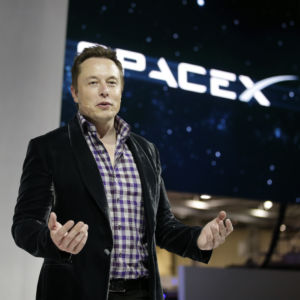Recently Elon Musk’s SpaceX launched its latest Falcon 9 rocket into space. SpaceX is now arguably the world leader in the rocket business, rivaling the largest governments in the number of missions logged while outperforming them on cost. In February it launched the Falcon Heavy—the world’s most powerful rocket currently in operation—and in March it celebrated the 50th Falcon 9 flight.
However, its next space-faring innovation will require breaking through regulatory barriers instead of technical ones. And if you think rocket science is difficult, imagine what happens when you add confusing and ill-defined regulations—the types even regulators don’t always know how to enforce—into the mix.
Last year, SpaceX boasted a perfect launch record with 18 successful missions, surpassing China and even rivaling Russia’s output. The development cost for the Falcon 9 was about $300 million. According to NASA’s own internal report, it would’ve spent between $1.7 and $4.0 billion designing the same capability. The Falcon Heavy, despite its colossal specs, costs a mere $90 million to produce. This is only slightly more than what NASA typically pays for one seat aboard the Russian Soyuz spacecraft.
SpaceX hopes to send astronauts to the moon and Mars aboard a new rocket in development called the BFR. Long before that happens, however, it must gain NASA certification to carry astronauts into space. Although Musk believes SpaceX will have the technical capability for manned missions with its Dragon spacecraft later this year and with the BFR in early 2019, it likely won’t receive its NASA certification until much later.
Commercial space companies are already subject to plenty of regulation, even if they don’t have interplanetary aspirations. Obtaining launch licenses from the Federal Aviation Administration is difficult, even for companies with considerable resources. Different guidelines exist for private spaceports and government-supervised launch locations. Licenses can’t be transferred between sites. And, oddly enough, the U.S. State Department oversees much of what goes into peaceful manned spacecraft under the heavily-regulated United States Munitions List.
What’s not on the books might be even more problematic. Regulators simply can’t keep up with the pace at which these commercial companies innovate and develop ever-grander plans. And without a clear legal framework, regulators are going to have a hard time figuring out what’s permissible and what isn’t. As a result, it becomes much easier for Uncle Sam to issue a reflexive “no.”
The cost of this caution? It could hold the United States back as a world leader in private space commerce, and deny us more of the revolutionary technologies that space travel has already provided.
Safety is critical in a fledgling industry, but striving for new achievements has always required some degree of risk on the part of those willing to take the lead. NASA lost astronauts while striving to reach the moon. In the late 1940s and 1950s, jet propulsion was cutting-edge technology. It was also incredibly dangerous.
Test pilots pushed themselves and their airplanes to the brink with few, if any, fail safes to save them when things went haywire—and they often did. In those days, the United States was losing volunteer test pilots on a weekly basis. Yet this era of rapid experimentation paved the way for commercial jet travel that has transformed the modern world, enriching and saving lives in a number of ways.
We may be on the cusp of another era of experimentation. Space Exploration has already given us life-improving technologies like the cochlear implant, the heart pump, and new fabrics that protect our firefighters, to name a few. What unseen technologies will we forego if we keep constraining the best businesses in space exploration?
None of this is to say that we should be cavalier about the safety risks involved. In fact, businessmen like Elon Musk will almost certainly fail if they cannot prove to the world that their technology can work safely.
Without letting innovators like SpaceX take risks, there can be no reward. Let’s not ground astronauts and shackle entrepreneurs with a precautionary mindset.

